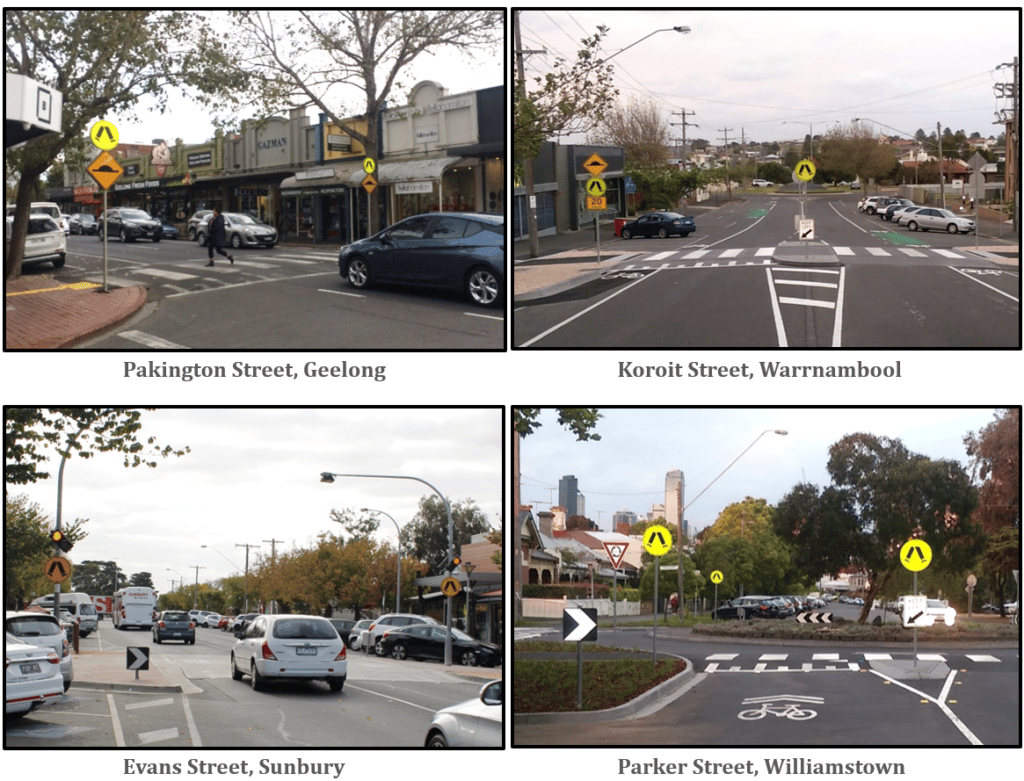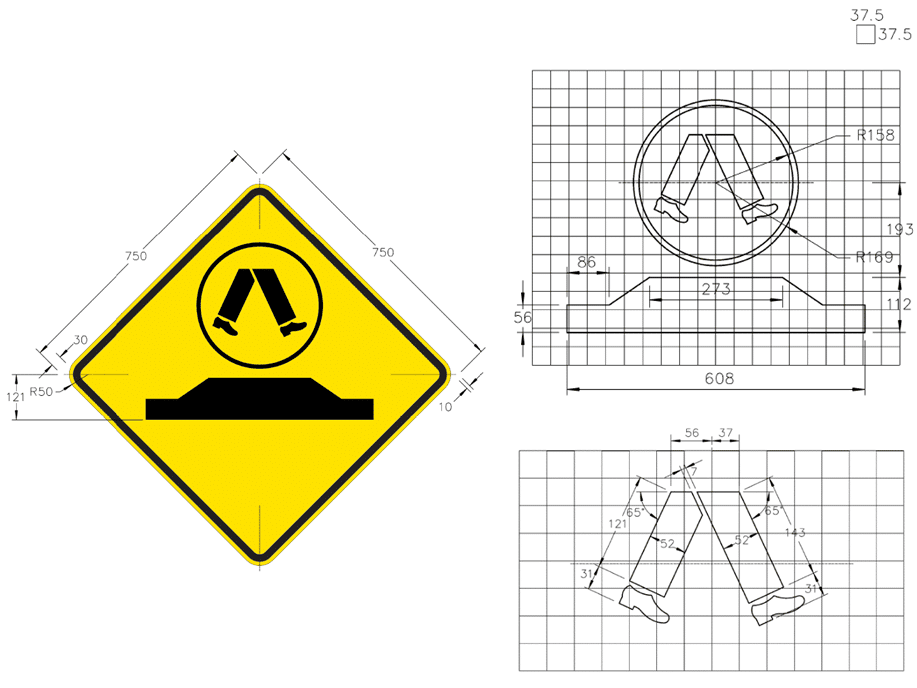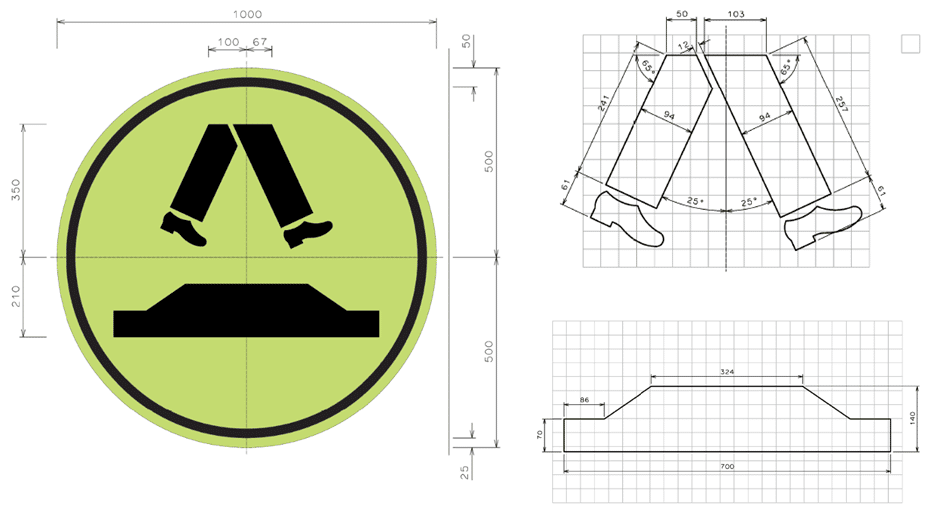Wombat Crossings? It must be a sign.
Take a look at the above examples of wombat crossings across Victoria. What do you notice about the signage at each crossing?
Currently there is no consistency with the way wombat crossings are signed. While the regulatory pedestrian crossing sign (the legs) is almost always present, the safety platform warning signs and advisory speed signs are far less common. As the above pictures show, sometimes they are installed on both sides, sometimes on a single side and at other times they are completely omitted. These signage variations between locations may cause a driver to misread the road ahead and therefore reduce the effectiveness of the wombat crossings. We believe that consistent and effective signage at these crossing locations is necessary and an important step in improving pedestrian safety.
What’s so great about Wombats?
A wombat crossing is the affectionate name given to a pedestrian (zebra) crossing that is placed on a flat top road hump. Not only does this provides pedestrian crossing priority, but the raised platform gives further prominence to pedestrians and encourages motorists to slow down on approach to the crossing. A recent study1 showed that wombat crossings can lower casualty rates by over 60% and are effective at reducing vehicle speeds. They are a formidable treatment in the Safe System toolkit.
What do the current signage standards say?
Unfortunately, when it comes to wombat crossings, the current signage standards are just as varied as the crossings themselves. According to AS1742.13 (2009) “the Road Hump sign is used at all types of hump, regardless of length or cross-sectional shape but not at a raised pedestrian crossing”, whilst AS1742.10 (2009) makes no reference to the Road Hump sign at raised pedestrian crossings at all. On the other hand, Austroads Guide to Traffic Management Part 8, states that at a wombat crossing, “devices should be clearly visible to approaching drivers, illuminated by adequate street lighting and enhanced by the use of signs, pavement markings and other delineation”. Furthermore, VicRoads Road Design Note 03-07, Raised Safety Platforms states that warning signs shall include a Safety Platform Ahead, a Safety Platform and an Advisory Speed sign at all road safety platforms.
As we can see, there is a lot of contradiction between various standards and guidelines, and this is reflected in the inconsistent signage on the roads.
What’s the problem?
There are a number of problems that arise from the current situation. As previously mentioned, the signage discrepancy between wombat crossings may increase driver confusion and reduce the effectiveness of the treatment. It is important that the signage adequately communicates the nature of the wombat crossing to motorists. In low light conditions, locations that are not signed with safety platform warning signs may potentially be mistaken for regular zebra crossings. As such, motorists may not be prompted to reduce their speed before passing through the crossing, which may result in loss of vehicle control, or worse still, a high-speed collision with a pedestrian.
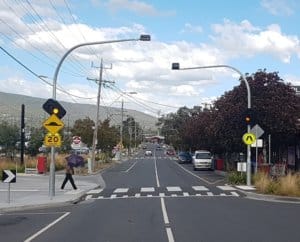 However, too much signage can also be a problem as it leads to sign cluttering. This is the reduced visibility to signage that sometimes occurs when there are a number of signs in close proximity. Some wombat crossings are signed with multiple pedestrian crossing, road safety platform and advisory speed signs. Drivers approaching these wombat crossings may not be able to process all the information as they approach these wombat crossings, or even have their vision to some signs obscured by others. The photo on the right shows an example of sign cluttering. You can see the Road Hump warning sign obscures the view of the pedestrian crossing sign.
However, too much signage can also be a problem as it leads to sign cluttering. This is the reduced visibility to signage that sometimes occurs when there are a number of signs in close proximity. Some wombat crossings are signed with multiple pedestrian crossing, road safety platform and advisory speed signs. Drivers approaching these wombat crossings may not be able to process all the information as they approach these wombat crossings, or even have their vision to some signs obscured by others. The photo on the right shows an example of sign cluttering. You can see the Road Hump warning sign obscures the view of the pedestrian crossing sign.
[1] Makwasha, T & Turner, B, 2017, ‘Safety of raised platforms on urban roads’, Journal of the Australian College of Road Safety, vol. 28, no. 2, pp. 20-27
So what can we do about it?
One potential solution is a new advance warning sign to be used exclusively at raised pedestrian crossings such as wombats. The challenge was creating a sign to let motorists know they were approaching a raised zebra crossing specifically. Here is an early concept:
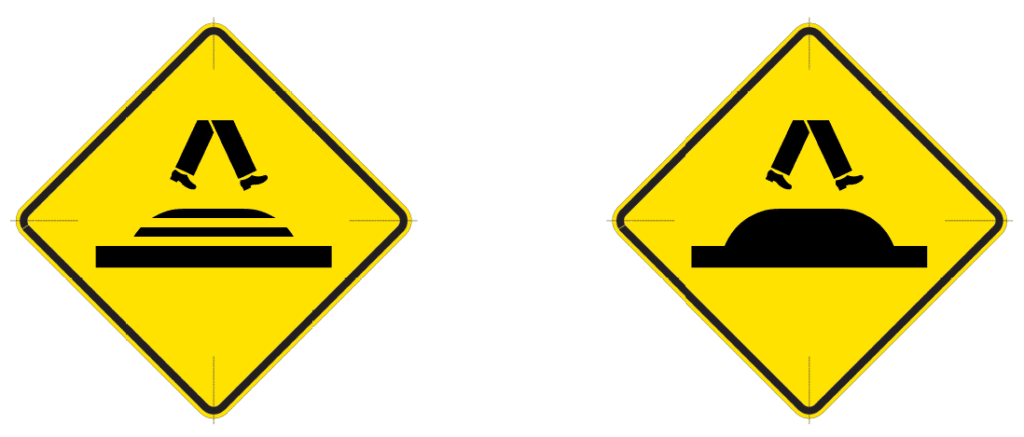
We then decided that the main focus of the sign should not be on the zebra crossing, and instead be on the pedestrian crossing on top of the raised platform. Here is a warning sign concept that we have designed:
A sign of things to come?
The above is a potential wombat crossing regulatory sign that we have designed. It essentially combines the pedestrian crossing and road safety platform signs onto a single sign face, which would reduce sign clutter and alert motorists to the raised nature of an upcoming pedestrian crossing.
This is just a concept at this stage, there would be many levels of approval required, including changes to regulations, standards and guidelines, but we’re interested in what the traffic engineering community thinks about this concept?

